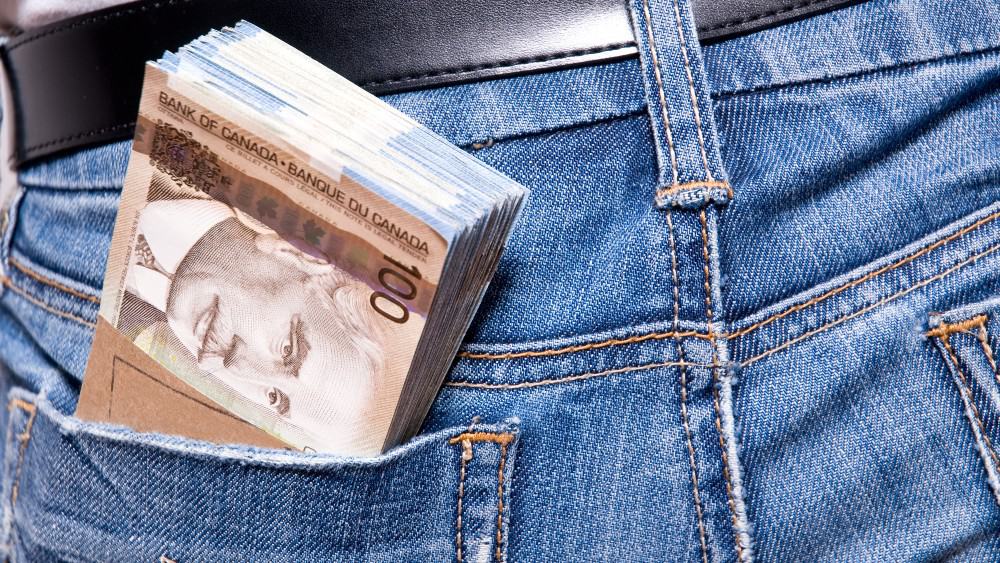Canadians are searching for ways to increase their cash flow in 2024 without being bumped into a higher tax bracket or potentially putting Old Age Security (OAS) payments at risk of a clawback. One way to achieve this goal is to hold income-generating investments inside a Tax-Free Savings Account (TFSA).
TFSA limit 2024
Investors will see their TFSA contribution limit increase to $7,000 in 2024 from $6,500 in 2023. The government indexes the TFSA limit to inflation and makes adjustments in $500 increments. Canadian residents who have qualified for the TFSA since the inception of the program in 2009 will have as much as $95,000 in TFSA cumulative contribution space as of January 1, 2024.
Unused TFSA room can be carried forward. This is helpful for people who might have income streams or expenses that vary widely from year to year. Any money pulled out of a TFSA will automatically open up equivalent new contribution space in the following calendar year. If a person has income built up in their TFSA that they plan to use in the early part of 2024, it makes sense to complete the withdrawal before December 29, 2023.
What is the OAS clawback?
Capital gains, dividends, and interest income are all tax-free and go straight into your pocket without concern that the earnings will increase your tax bill. This is particularly important for retirees who receive OAS and have high annual taxable income coming from company pensions, Canada Pension Plan (CPP), OAS, Registered Retirement Savings Plan (RRSP) withdrawals, or Registered Retirement Income Fund (RRIF) payments.
The CRA implements an OAS pension recovery tax when net world income exceeds a minimum threshold. That number is $86,912 in 2023. The OAS clawback is projected to kick in at $90,997 in 2024. Every dollar of net world income above the threshold amount will trigger a 15-cent reduction in the total OAS paid in the following year. Earnings of $91K in retirement sounds like a lot, but it doesn’t take long for someone with a decent company pension and full CPP, OAS, and other taxable income to hit that level. A large chunk of it gets eaten up by taxes, so things can still be tight for some people at the end of the month.
This is why it makes sense to maximize income-generating investments inside a TFSA before holding investments inside a taxable account.
TFSA passive income
Rates on Guaranteed Investment Certificates rose as high as 6% this year. They have pulled back in recent weeks and could continue to fall in 2024, as bond yields slide on expectations of rate cuts by the Bank of Canada and the U.S. Federal Reserve. That being said, some Canada Deposit Insurance Corporation (CDIC) members are still offering rates above 5% for short-term, non-cashable GICs.
Dividend stocks that took a pounding through most of 2023 started to recover in the past two months, but several great Canadian dividend payers still trade at discounted prices and offer high yields.
Telus (TSX:T), for example, has increased the dividend annually for more than two decades. The stock currently trades near $23 per share compared to $34 at the peak in 2022.
Consolidated revenue and earnings before interest, taxes, depreciation, and amortization (EBITDA) are expected to be higher in 2023 than last year, so the pullback looks overdone. Telus stock currently provides a 6.5% dividend yield.
Other top TSX dividend-growth stocks have yields above 7% right now.
The bottom line on tax-free passive income
Investors can still put together a diversified portfolio of GICs and high-yield dividend stocks to get an average yield of at least 5.5% today. This would generate $2,750 in tax-free passive income next year on a TFSA of $50,000. Every little bit helps.
 Don't Miss AI's Third Wave
Don't Miss AI's Third Wave








